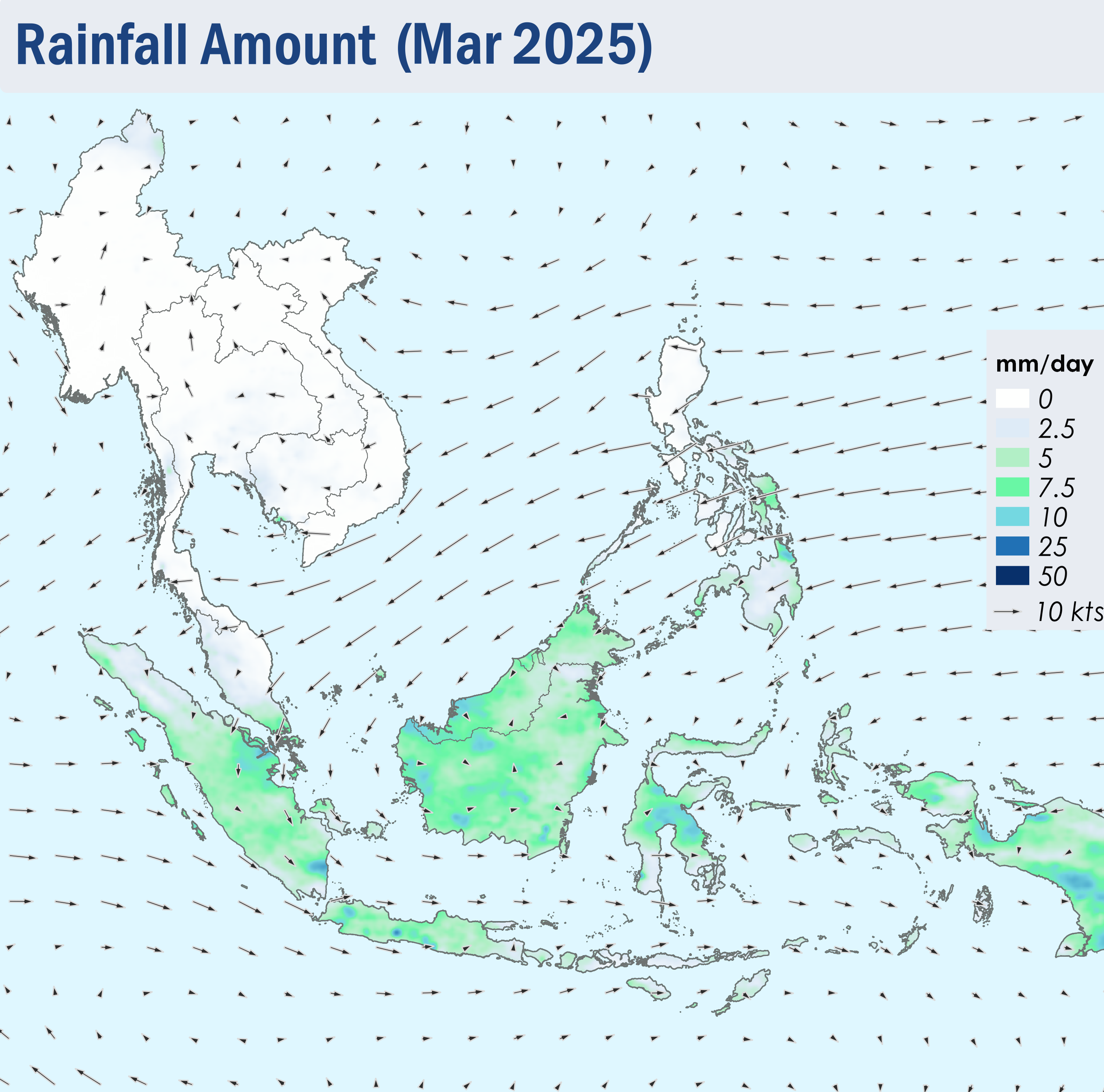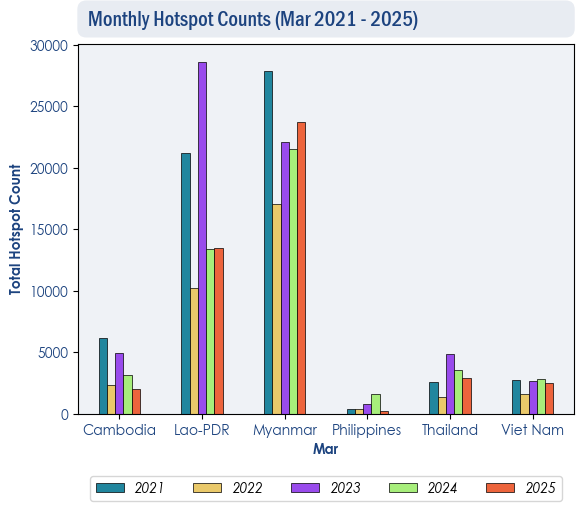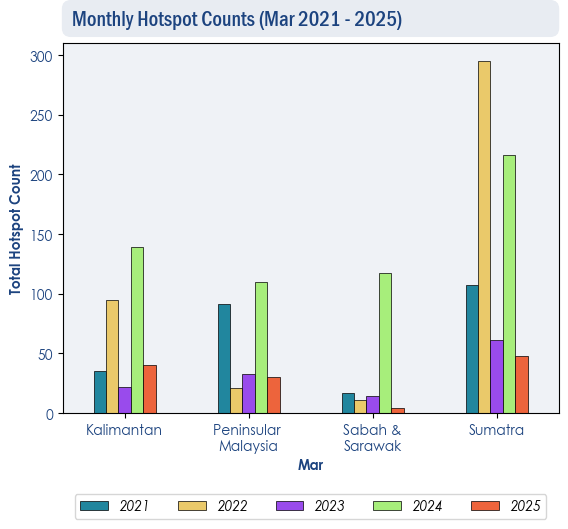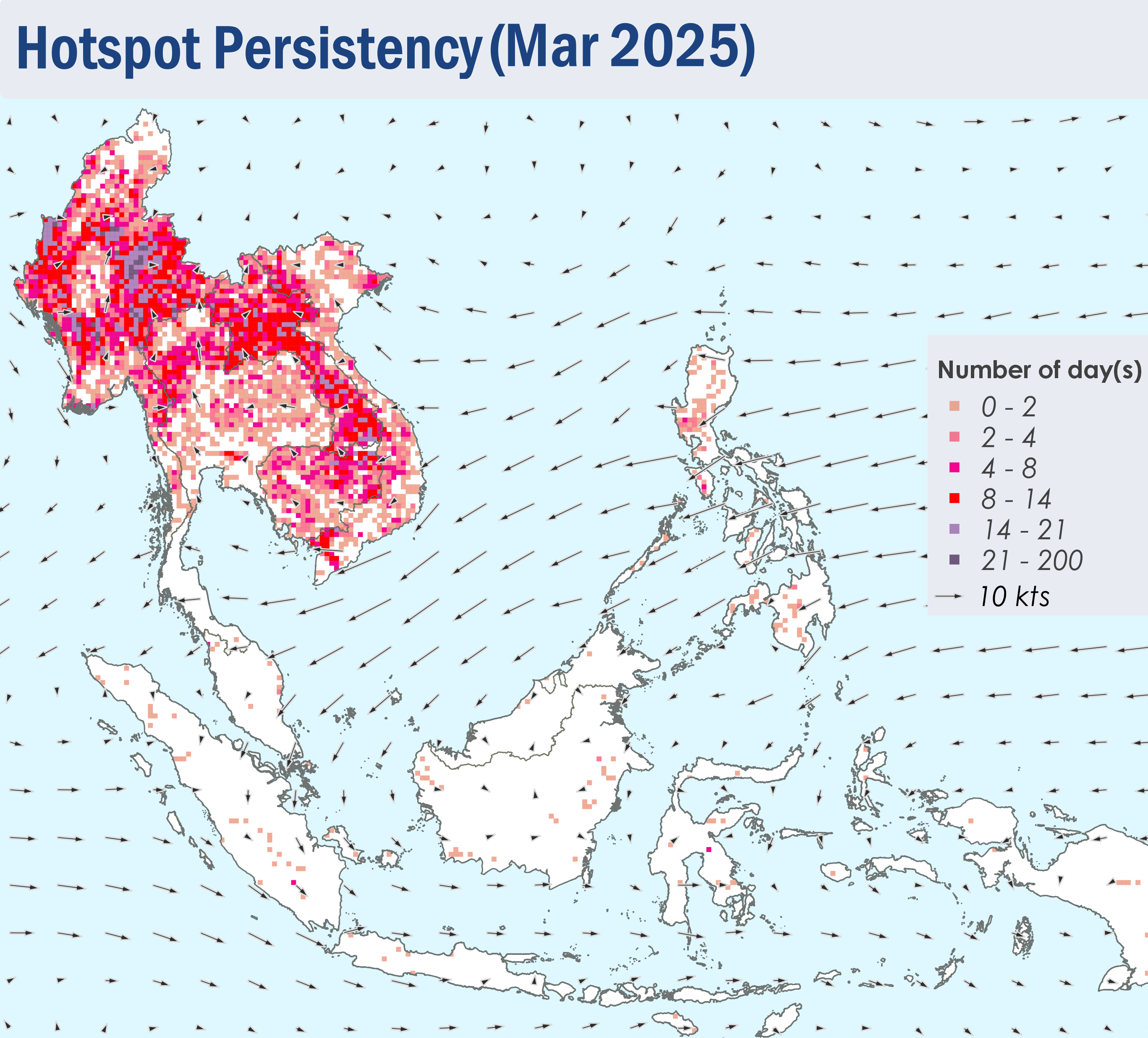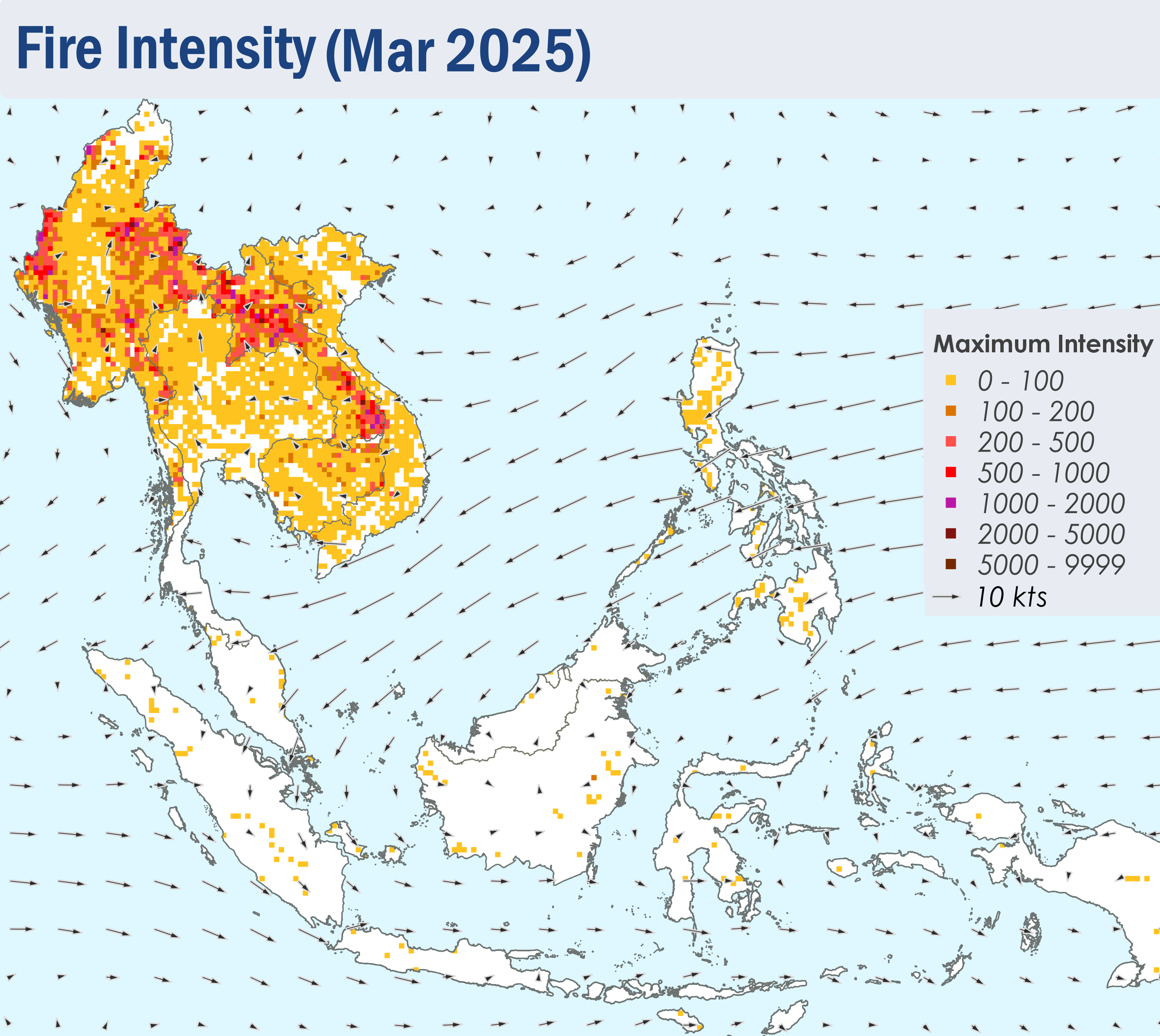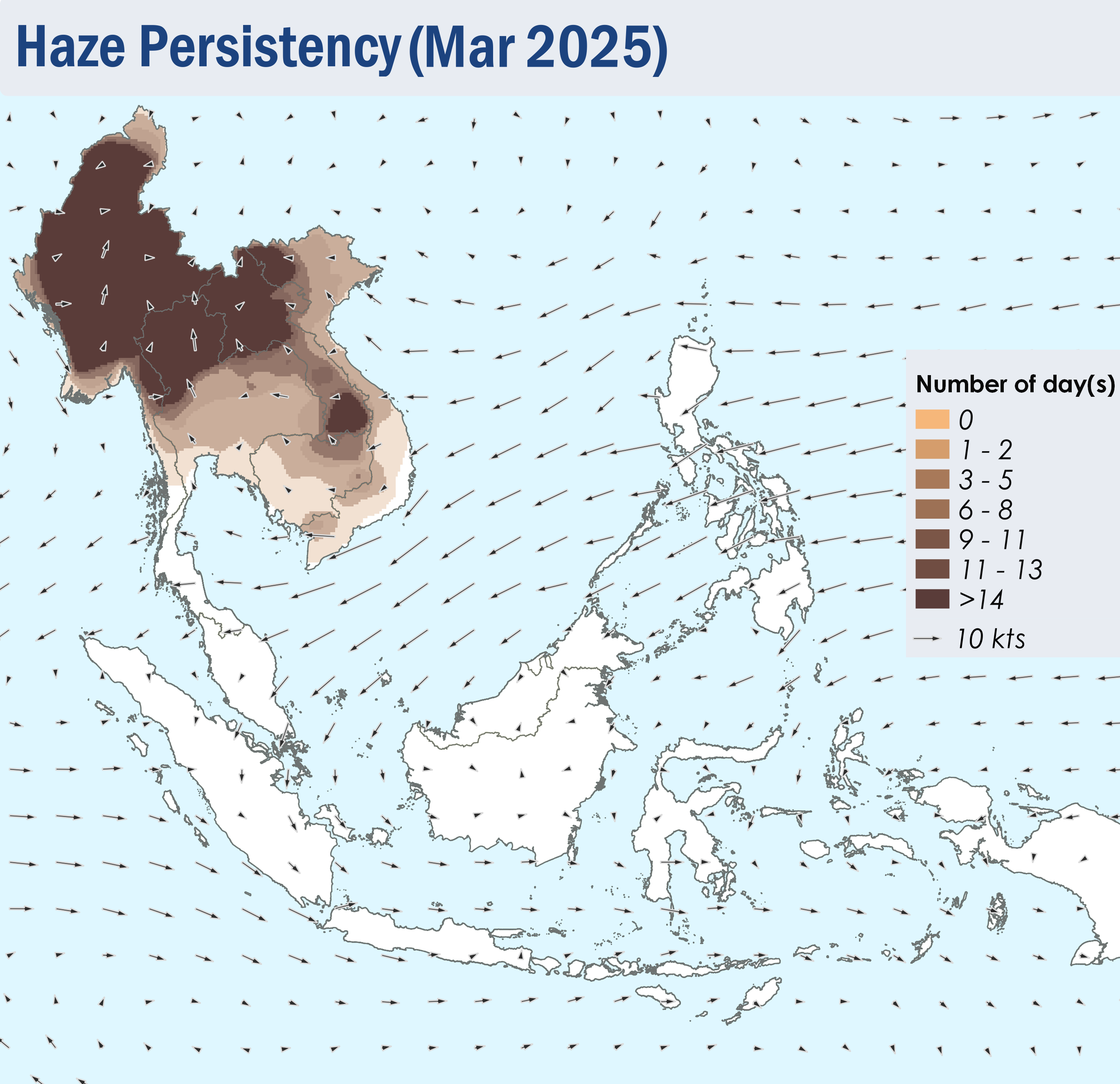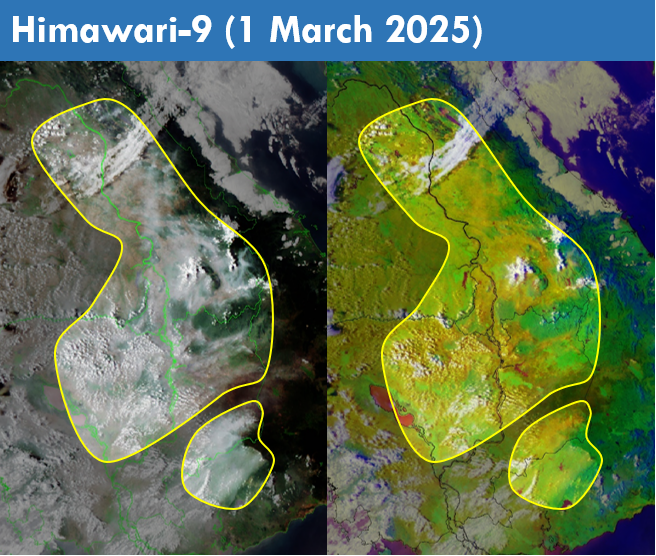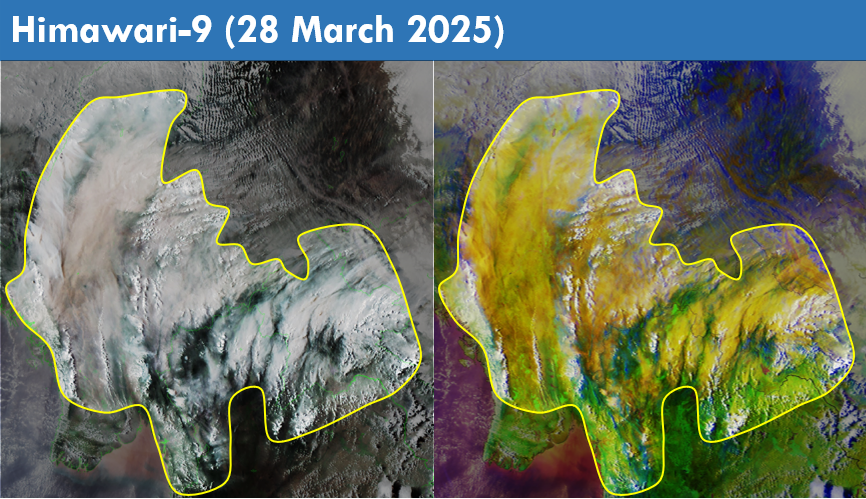Review of Regional Haze Situation for March 2025
1.1 During March 2025, the ASEAN region remained under the influence of Northeast Monsoon conditions. Over areas north of the Equator, the surface winds blew predominantly from the northeast or east, apart from the Mekong sub-region where the prevailing winds were generally light and variable in direction. The prevailing low-level winds over areas south of the Equator blew from the west or northwest, while the winds over the equatorial region were light and variable in direction (Figure 1).
1.2 Dry weather persisted over much of the Mekong sub-region and the northern parts of the Philippines (Figure 1). In view of the escalating number of hotspots and the deterioration of the smoke haze situation under the prolonged dry conditions, Alert level 3 for the Mekong sub-region was activated on 17 March 2025, signalling a high risk of severe transboundary haze occurrence. Meanwhile, over the southern ASEAN region, high rainfall was recorded over most parts of the region, especially over the equatorial region, partly due to a Northeast Monsoon surge in the middle of the month (Figure 1), which has led to flooding over parts of Johor, Malaysia. However, drier conditions were also recorded over the northern and central parts of Peninsular Malaysia.
1.3 The hotspot counts for the ASEAN region in March 2025 were generally similar to or lower than those of previous years, except for Myanmar where there was a slight increase from the previous few years (Figure 2, 3).
1.4 Scattered to widespread hotspots were detected in the Mekong sub-region, especially over the northern parts of the Mekong sub-region, as well as the southern parts of Lao PDR and the northeastern parts of Cambodia, where the hotspot clusters were more persistent and intense (Figures 4, 5). Widespread transboundary moderate to dense smoke haze was observed mainly over the northern parts of the Mekong sub-region, as well as the southern parts of Lao PDR and the northeastern parts of Cambodia, where the haze was persistent (Figure 6, 7, 8). Over the southern ASEAN region and the Philippines, the hotspot and smoke haze situation remained subdued (Figure 6).


